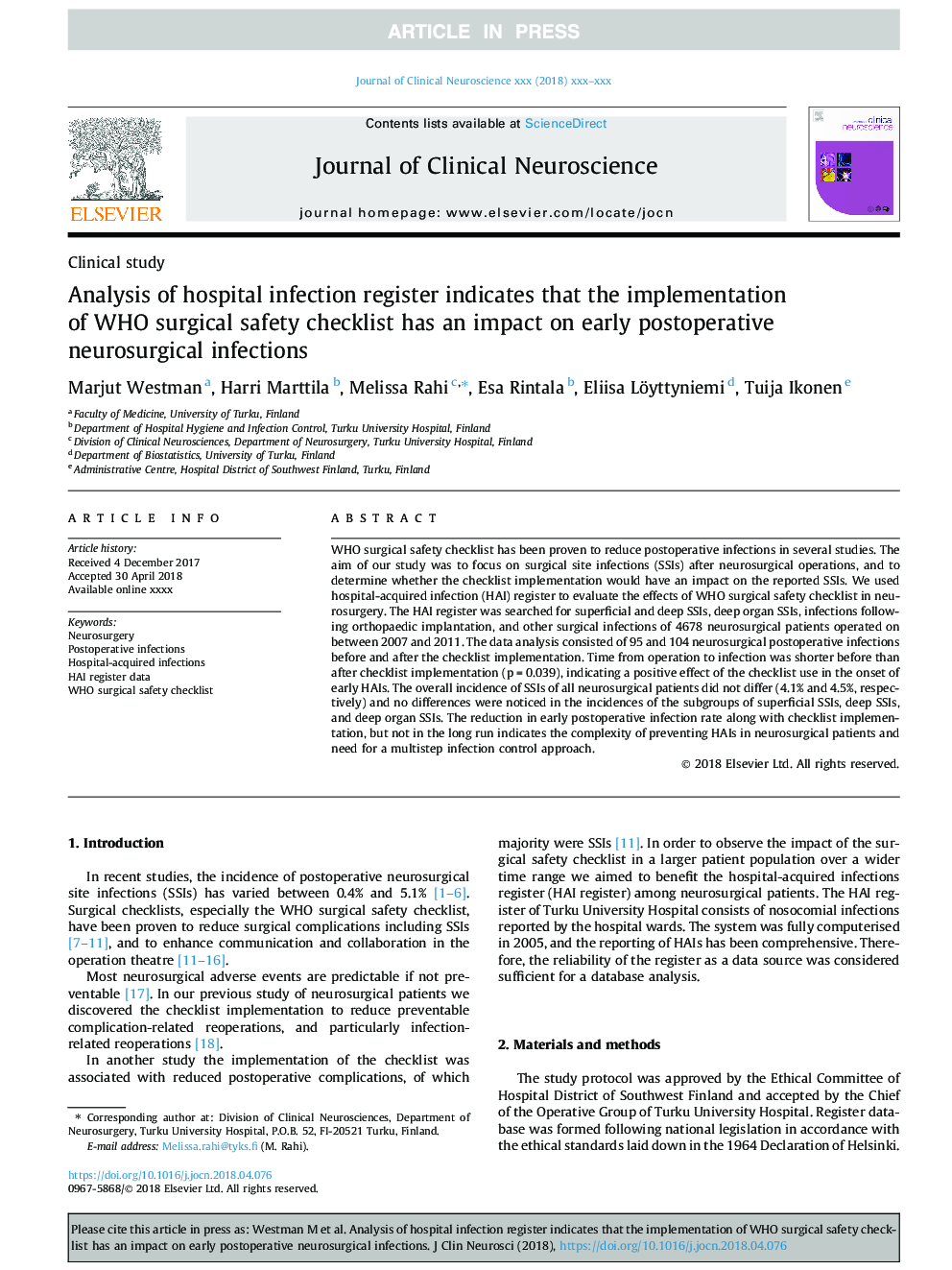| Article ID | Journal | Published Year | Pages | File Type |
|---|---|---|---|---|
| 8685054 | Journal of Clinical Neuroscience | 2018 | 5 Pages |
Abstract
WHO surgical safety checklist has been proven to reduce postoperative infections in several studies. The aim of our study was to focus on surgical site infections (SSIs) after neurosurgical operations, and to determine whether the checklist implementation would have an impact on the reported SSIs. We used hospital-acquired infection (HAI) register to evaluate the effects of WHO surgical safety checklist in neurosurgery. The HAI register was searched for superficial and deep SSIs, deep organ SSIs, infections following orthopaedic implantation, and other surgical infections of 4678 neurosurgical patients operated on between 2007 and 2011. The data analysis consisted of 95 and 104 neurosurgical postoperative infections before and after the checklist implementation. Time from operation to infection was shorter before than after checklist implementation (pâ¯=â¯0.039), indicating a positive effect of the checklist use in the onset of early HAIs. The overall incidence of SSIs of all neurosurgical patients did not differ (4.1% and 4.5%, respectively) and no differences were noticed in the incidences of the subgroups of superficial SSIs, deep SSIs, and deep organ SSIs. The reduction in early postoperative infection rate along with checklist implementation, but not in the long run indicates the complexity of preventing HAIs in neurosurgical patients and need for a multistep infection control approach.
Keywords
Related Topics
Life Sciences
Neuroscience
Neurology
Authors
Marjut Westman, Harri Marttila, Melissa Rahi, Esa Rintala, Eliisa Löyttyniemi, Tuija Ikonen,
